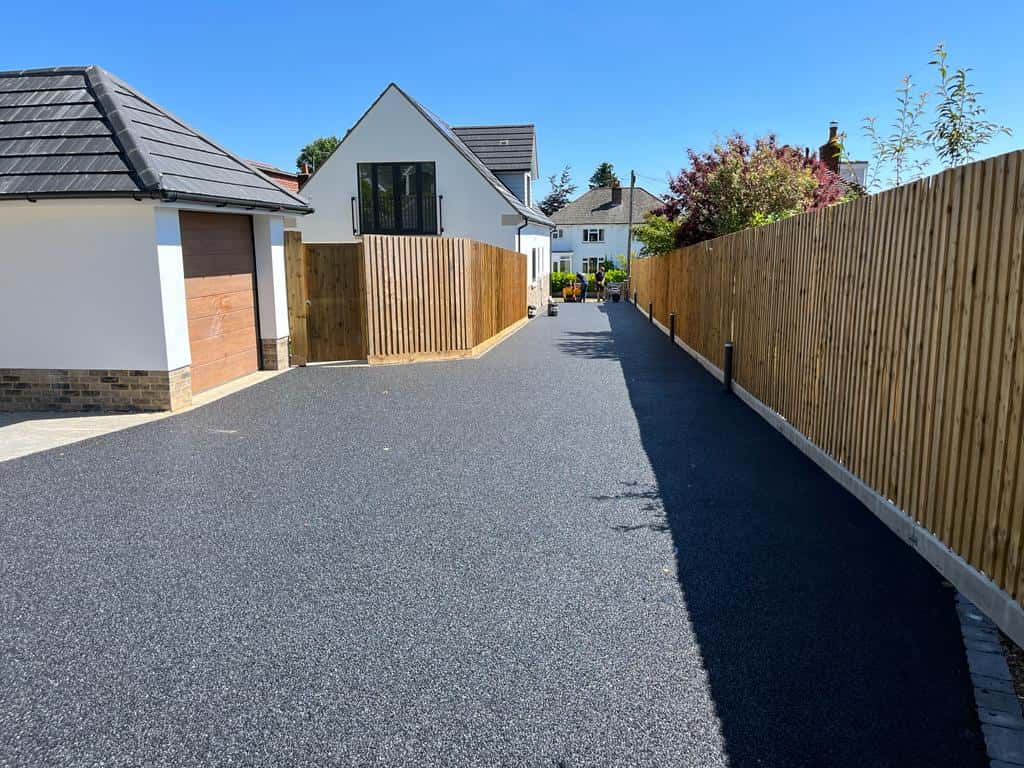Living on a sloped property has its perks—charming views, natural elevation, and added curb appeal. But when it comes to installing a driveway, an incline adds complexity. It’s not just about laying down a surface; it’s about ensuring stability, drainage, grip, and long-term durability. One of the best materials for handling these challenges? Tarmac.
Tarmac driveways, when properly installed, offer excellent performance on sloped terrain. But not all driveways—or contractors—are created equal. This guide explores everything you need to know about tarmac driveways on slopes, from planning and installation to aesthetics and safety.
Why Sloped Driveways Require Special Attention
The Unique Challenges of Gradient Surfaces
Installing a driveway on a flat surface is one thing. Add a slope, and you introduce a range of new challenges:
-
Water runoff can cause erosion or flooding if not properly managed.
-
Material slippage becomes a concern, particularly on steep gradients.
-
Wear and tear is accelerated by gravity and pressure from braking vehicles.
-
Safety risks increase, especially during wet or icy weather.
Sloped driveways also affect access and usability. Cars may struggle with traction on slick surfaces, and pedestrians face a greater risk of slipping. The goal isn’t just to create a functional surface—it’s to engineer a safe, durable, and visually appealing solution tailored to the unique gradient of your land.
Safety, Drainage, and Structural Considerations
The angle of the slope will determine how deep the sub-base needs to be, what kind of drainage is required, and whether reinforcement is necessary. A poorly designed sloped driveway can lead to:
-
Heaving and cracking from water buildup under the surface
-
Pooling near your garage or front door
-
Damage to nearby structures due to runoff or erosion
All of these concerns make it essential to work with a professional who understands the dynamics of incline-specific installation.
Why Tarmac Is a Great Choice for Inclined Driveways
Strong Adhesion and Compact Finish
Tarmac, made of crushed stone and bitumen, is compacted under heat to form a dense, cohesive surface. This gives it excellent adherence to the slope, unlike loose materials like gravel that shift over time. Its seamless finish eliminates the joints or weak points that can become problematic on slopes.
For steep or uneven driveways, tarmac offers:
-
A smooth driving surface with minimal shifting
-
Good grip for both cars and pedestrians
-
Resistance to potholes and erosion when properly laid
Tarmac also adapts well to curves and winding paths, which are often necessary in sloped layouts to reduce the steepness of the gradient.
Low-Maintenance Performance on Slopes
Once installed, tarmac requires very little upkeep. Regular sweeping, occasional sealcoating, and periodic inspections for cracks are usually all that’s needed. On sloped surfaces, this is a major plus—since performing maintenance on an incline is more challenging than on flat ground.
Unlike concrete, which can crack and shift under freeze-thaw cycles, tarmac flexes slightly with temperature changes, making it more forgiving in varied UK weather conditions.
Planning a Sloped Tarmac Driveway
Site Survey and Gradient Assessment
Every successful tarmac driveway starts with a thorough site assessment. This includes:
-
Measuring the gradient (slope steepness)
-
Checking the direction of water flow
-
Identifying soft spots or potential drainage issues
-
Understanding the surrounding landscaping
In general, gradients above 1:12 (or about 8%) require extra attention. Extremely steep driveways may need switchback paths or additional structural reinforcement to maintain safety.
A professional will also consider the orientation of your property. For example, south-facing slopes may experience more thaw-freeze cycles, which impact durability.
Key Factors That Influence Design
-
Driveway length and width
-
Access for construction equipment
-
Connection to existing paths, roads, or garages
-
Proximity to neighbours and property boundaries
All of these elements influence the scope and cost of your project—and must be considered before breaking ground.
Drainage Design for Sloped Driveways
Preventing Water Runoff and Pooling
One of the biggest concerns with a sloped driveway is water. Gravity causes water to run down the incline and collect at the base. Without proper drainage, this can:
-
Flood garages or basements
-
Weaken the tarmac’s foundation
-
Cause long-term damage to the property
Drainage planning is not optional—it’s essential.
Channel Drains, Gullies, and SUDS
There are several drainage solutions available:
-
Linear channel drains at the base of the slope
-
Gullies or soakaways to collect excess water
-
French drains for redirecting flow into nearby soil
-
Permeable tarmac alternatives (SUDS-compliant)
Combining proper grading with efficient drainage ensures that your tarmac driveway not only looks good but performs well during the UK’s wettest months.
Looking for trusted experts who can install sloped driveways the right way? Searching for tarmac driveways near me will connect you with professionals who specialise in gradient-specific installations.
Tarmac Installation Techniques for Inclines
Layering, Compaction, and Edge Support
When installing tarmac on a slope, the construction method needs to be far more precise than for a level surface. It begins with the sub-base, which must be compacted in layers to prevent shifting or cracking under pressure. Each layer is meticulously rolled and tested for density.
Edge support is also critical. Without reinforced edges—such as concrete or stone kerbs—the tarmac could begin to spread over time due to the pull of gravity. These edges act as a form of structural bracing, holding the entire driveway in shape.
During the hot-laying process, installers must work quickly and evenly to prevent the material from sliding before it cools. The steeper the slope, the faster this must be done to ensure a clean, stable finish.
Reinforcements to Prevent Slippage
Depending on the incline, reinforcement grids or geotextiles may be used beneath the sub-base to provide additional grip and stability. These materials prevent movement of the aggregate, reducing the chance of subsidence or rutting.
On particularly steep slopes, a textured surface treatment or anti-slip aggregate can be mixed into the top layer of tarmac to add traction and reduce skidding risks—particularly important for homes with frequent vehicle use.
